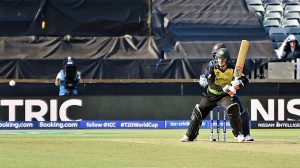On Sunday night 86,174 people packed into the Melbourne Cricket Ground (MCG) for the final of the Women’s T20 Cricket World Cup between Australia and India. The attendance was an indication that, when given exposure and promotion, women’s sport has the ability to gain public attention and enthusiasm equal to men’s sport – and that female elite athletes merit similar recognition of their achievements and financial rewards as their male counterparts.
T20 or Twenty20 is the shortest form of the three varieties of cricket played at the international level. Designed as a fast-paced game to take place in the same timespan as other sports — around three hours — from its conception in 2003 it has become incredibly popular, especially being able to attract a younger audience. This year’s World Cup was played over two and a half weeks by 10 teams — Australia, India, England, South Africa, Pakistan, Bangladesh, Sri Lanka, New Zealand, the West Indies (and amalgam of Caribbean countries), and Thailand. Australia defeated India in the final.
While the other countries all have strong and long-standing cricket cultures, the participation of Thailand in the tournament was an intriguing addition. Their qualification to the World Cup gives an indication that the sport has been able to gain traction with Thai women exclusive of any male participation in their country. Thailand’s men’s team are currently ranked 65th in the world, which in cricketing terms is far from the elite level the women are now operating at. Their advancement also provides an indication that Thai women have paid no attention to the idea that certain sports are “male,” and they have independently found a sport that they like and become highly successful at playing it.
The first T20 World Cup for female cricketers was staged in England in 2009. The tournament was held at the same time as the men’s World Cup, and games were often scheduled as “double-headers” alongside men’s matches, with women’s matches being played directly before the men. This helped women’s cricket gain crowds and media coverage, but it also gave the impression that women’s matches were only a precursor to the “real action” of the men’s game. In 2018 the T20 World Cup was held in the Caribbean and for the first time was staged as a standalone tournament, distinct from the men’s tournament. That enabled the event to be judged on its own merits.
The success as a spectator sport of this year’s T20 World Cup is symbolic of the significant rise in women’s cricket in Australia in recent years. It was only a decade ago that women cricketers were considered “semi-professional” athletes, earning only a few thousand dollars a year, often having to pay for their own travel expenses, and being forced to seek other employment in order to make a living. However, a landmark restructuring within the Australian Cricket Board (ACB) in 2017 saw remuneration for female cricketers jump to an average of almost US$120,000 a year for a contracted player, enabling women to pursue the sport as a full time occupation.
Globally, however, this something only Australian, Indian, and English female cricketers have been able to achieve, with other countries yet to value their female players enough to provide them with professional wages. Yet even in these three countries the pay discrepancies between female and male cricketers still remain significant. The contract for Indian captain Harmanpreet Kaur is worth around US$68,000, yet her male equivalent, Virat Kohli’s contract is worth close to US$1 million (although with bonuses, club contracts, and endorsements he is estimated to have earned around $25 million last year).
One initiative that may go some way to bridging this discrepancy is the establishment of a women’s version of the world’s most lucrative tournament, the Indian Premier League (IPL). Unlike domestic T20 leagues in Australia and England, India does not have a women’s equivalent. Last year a small, week-long, three team exhibition competition took place in Mumbai. The expansion of this to a full tournament should be a serious goal of the Board of Cricket Control in India (BCCI), in order to bring further opportunities to the world’s female cricket players.
The huge attendance in Melbourne on Sunday night for the World Cup final should be recognized for the historic event that it was. It should also provide the various international cricket organizations with a strong incentive to further invest in their women’s teams. There should be an impetus to maintain this momentum, and work toward bringing women’s cricket closer to their male counterparts in how they are covered by the press, regarded by the public, and financially rewarded for their efforts.

































